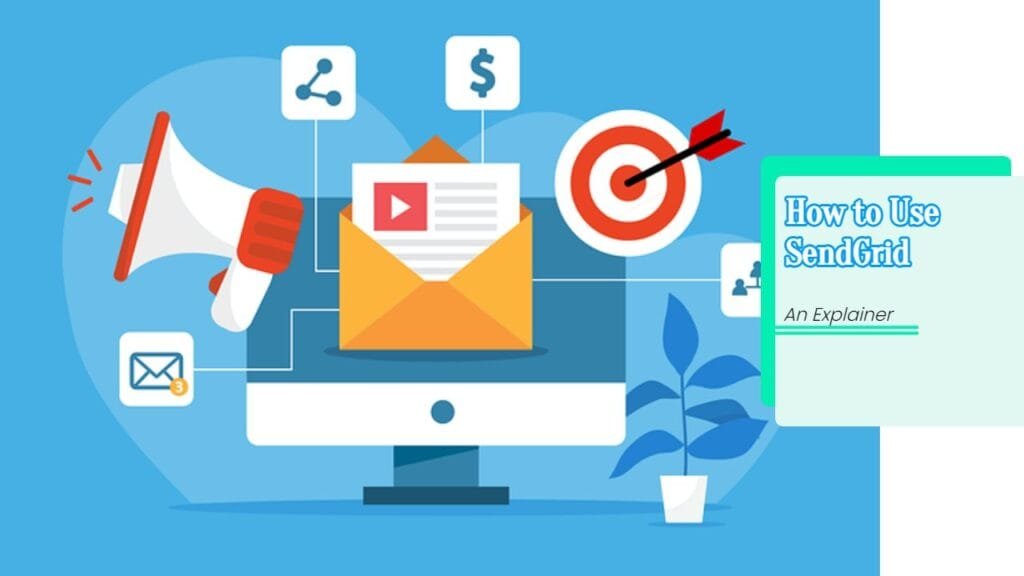Understanding Omnichannel Customer Experience
Definition and Importance
I see the omnichannel customer experience as working like one big happy family. It’s all about piecing together those different ways businesses interact with folks — online, in-store, over the phone, you name it — to create one harmonious second encounter. No awkward bumps or hiccups between those interactions. It’s like putting together a jig-saw; you get that full picture of how someone moves through their journey, leaving them satisfied and likely to swing back. Sometimes it feels like you’re holding a treasure map to boost loyalty. According to Qualtrics, the magic really happens if you look at all customer chats from a wide angle, which really packs a punch for businesses juggling multiple ways to connect.
Benefits of Omnichannel Strategy
Setting up an omnichannel strategy is like planting a garden that keeps giving back, especially if you’re trying to make your customers smile. Check out some cool perks:
| Benefit | Description |
|---|---|
| Happy Campers | Keep them smiling with a consistent experience anywhere they show up, and they’ll likely come back for more. |
| Cash Flow Boost | When folks feel the love, they tend to shop more, giving sales a nice uptick. |
| Loyal Buddies | Happy customers stick around longer, turning into solid gold for your business. |
| Smooth Sailing | Getting everything to work well together can save you some serious time and dough. |
| Standing Out | Being customer-savvy puts you ahead of the game, especially when everyone else seems the same. |
Clearly, these perks leave a trail of why grabbing onto an omnichannel way is a no-brainer for any business hoping to bolster its customer experience. Putting the spotlight on customer bits and bobs makes them loyal, happy, and ultimately boosts how the business plays out in the long run.
Consider giants like Starbucks who seamlessly wrap its app, loyalty perks, and walk-ins into one tasty package. According to Qualtrics, this level of blend has brewed stronger customer ties, offering insights that businesses dream about.
To really drink up these rewards, it’s crucial to give the nod to a strong, customer-first vibe in my team and think about customer experience training. Knowing how to use an omnichannel strategy can flip the script on how we connect with our customers.
Successful Implementation Strategies
Let’s take a look at jazzing up the shopping experience. Grabbing some insights from the heroes who’ve been there, done that, and got the hoodie to prove it can work wonders. Speaking of legends, have you met Starbucks?
Starbucks Case Study
Meet Starbucks, the caffeine champ that knows how to keep us coming back for more. They’ve nailed the art of blending their mobile app, loyalty perks, and in-store magic to craft a journey worth waking up for. This clever combo means customers stick around, spend a little extra, and Starbucks gets the scoop on what we love (Qualtrics).
They’ve cracked the code with their app by letting us order ahead and avoid the dreaded queue. The loyalty program? It’s like putting a golden star next to every coffee purchase, while secretly gathering info on our tastes. It all ties together, so no matter how you engage — the app, the store, or both — the experience is as smooth as a fresh brew.
Starbucks’ high scores in keeping us engaged through every channel:
| What They Did | How It Worked Out |
|---|---|
| Built Loyalty | Up by 25% |
| Spending Per Visit | Hit $5.00 |
| Orders by Phone | 20% of total |
Key Considerations for Implementation
Thinking about jumping on the omnichannel bandwagon? Here are some hot tips for making it work like a charm:
Channel Link-up: Make sure every way a customer interacts with your brand clicks together like puzzle pieces. Whether they’re online or popping into the shop, it all needs to feel like a single, awesome ride.
Smart with Data: Use your data tools to crack the code on what customers want. This does wonders for personalizing what they’re seeing and experiencing.
Gadget Gathering: Pick tools and tech that play nice together. When channels merge seamlessly, everyone gets a better time. Think about gearing up with a top-tier customer experience platform.
Staff Know-How: Train your team to harness these instruments and boost customer joy. And of course, a good customer experience training sesh is a must.
Listen Up: Set up a way to really hear what customers are saying, to keep leveling up that experience (experience boost).
By thinking through these steps, you’ll be on the path to crafting an omnichannel experience that even longtime coffee lovers would commend. Learning from Starbucks’ playbook could be just what you need to keep folks hooked and loving the journey. Want to get deeper into customer experience land? Start mapping it out with customer journey mapping and see your brand through their eyes.
Challenges of Omnichannel Strategy
So you wanna go all omnichannel, huh? It sounds like a fun ride, but buckle up! Wrangling an effective game plan ain’t just a walk in the park. You’ve got issues with gathering up your data and tech, plus the pesky problem of everyone’s favorite pain in the neck—those internal silos. And believe me, they can seriously mess with delivering that smooth, consistent vibe across all your customer hangouts.
Data Integration and Management
Alright, first up—data. It’s collected from all over the place—CRMs, online shopping sites, social platforms, emails—you name it. Trying to squish all this info into a single, sensible view is like trying to assemble a jigsaw puzzle in the dark (Taglab). If you can’t manage to whip this data into shape, good luck knowing what your customers are actually after or pitching them the right message the right way.
| Challenge | Impact |
|---|---|
| Fragmented Data | Gaps in customer insights and consistency problems |
| Complex Integration | Struggles to nail that unified customer journey |
| Resource Shortages | Data management headaches |
Technology and Organizational Silos
Now, onto those dreaded silos. Picture this—every department in your org is using their own funky systems, and the result? Processes that don’t vibe together and one heck of a communication mishmash (Contentsquare). For the little guys in business, it’s even tougher—limited resources and so many hats to wear mean tech integration often takes a back seat (Taglab). Breaking down these walls and fostering teamwork isn’t just a nice idea; it’s essential if you ever want to conquer these hurdles and deliver a customer experience worth writing home about.
| Challenge | Impact |
|---|---|
| Organizational Silos | No shared language or vision |
| Limited Resources | Hard time rolling out the omnichannel dream |
| Technology Gaps | Can’t get everything and everyone on the same page |
Taking on these challenges head-first with smart data wrangling, a tech overhaul, and plenty of high-fives between departments is the name of the game to get that unified customer experience up and running. This ain’t just a project, folks—it’s a mission on behalf of your customers!
Overcoming Customer Experience Challenges
Making your customers happy isn’t just about the shiny stuff. Ya gotta face and tackle the things that trip ’em up and make ’em gnash their teeth. I’m talkin’ about really diggin’ into what customers are goin’ through and listening to what they say—loud and clear.
Customer Journey Mapping
Mapping out a customer’s journey is like getting inside their heads, figuring out the who, what, why, and how they’re dealing with my business. This visual roadmap is my ticket to align what I’m offering with what they’re anticipating. It’s about spotting that cringy moment they experience, right from the spark of interest to their final cheer or complaint.
Here’s how I break down the stages:
- Awareness: Where do we pop up on their radar?
- Consideration: What’s jostling in their minds as they weigh options?
- Purchase: What’s making them sweat while they hit ‘buy now’?
- Post-Purchase: How do I keep the smile on their face once they’ve got the goods?
Sifting through piles of data from all my touchpoints helps in sketching out a solid roadmap. This lets me zero in on rough patches and smooth ’em over.
| Life of a Customer | What I Look For |
|---|---|
| Awareness | How clear is our presence? Does anyone even see us? |
| Consideration | What’s chattin’ in reviews and queries that sway ’em? |
| Purchase | Is it a breeze to pay and get things done? |
| Post-Purchase | Are we staying on the radar with follow-ups and loyalty perks? |
Importance of Feedback Mechanisms
Getting feedback is a game-changer. Ignoring customer voices ain’t an option, especially when they’re holding the rulebook on how to win the game. Their critiques and praises guide me to tweak and twiddle till the offerings match their aspirations.
Histories are littered with brands that thought ignoring feedback was a cute trick. Spoiler: they didn’t last. By planting response setups all over my various communications, I’m ensuring everyone gets to spill the beans, be it sugar-coated or seasoned with salt.
The best moves involve:
- Surveys that Recurringly Nudge: I send ’em out right after a customer brushes with my business.
- Feedback Right Now: Utilize techy doodads to get instant peeks into how they’re handling things.
- Crunch the Numbers: Sift through what’s coming in and figure the hotspots where change is needed most.
Keeping customers at the heart of everything ain’t just about singing their name—it’s about acting on what they say. This laces up my decision-making with insights directly from those who matter—the customers. This isn’t just about a happy face; it’s about making sure when they think customer experience, they think of how we did them right.
Measuring and Tracking Success
I’m all about keeping track of how things are going in the wild world of omnichannel customer experience. It’s not a guessing game; I need real numbers to see how I’m doing and to tweak my approach as needed.
Key Metrics for Customer Experience
When it comes to figuring out if folks are happy with their experiences, I’ve got a handful of trusty metrics that help paint the picture.
| Metric | Description |
|---|---|
| Net Promoter Score (NPS) | Checks how likely customers are to suggest my brand to others. |
| Customer Satisfaction Score (CSAT) | Looks at how pleased customers are after dealing with a particular interaction or the overall vibe they’re getting. |
| Customer Effort Score (CES) | Measures how much hassle customers face when sorting things out or buying stuff. |
| Churn Rate | The rate at which customers decide to call it quits with my services over a given time. |
| Customer Lifetime Value (CLV) | The total bucks expected from a customer during their ride with my brand. |
These metrics aren’t just numbers; they’re a peek into how well I’m getting along with my customers. Watching these figures shift can clue me into how well I’m meeting what they want and need and help me fine-tune for an even better experience. Check out more about the customer experience journey here.
ROI Measurement in Omnichannel Marketing
Figuring out the return on investment for my marketing shenanigans is key. Gotta make sure the cash I’m shelling out is doing its magic. Here’s how I roll:
- Metric Impact Analysis: I scope out how things like NPS and CLV are moving and shaking over time compared to certain campaigns. It tells me if my marketing mojo is rubbing off on the customer experience.
- Omnichannel Attribution: This strategy ties it all together, syncing up online and in-person metrics. It gives me a full view of what nudges customers toward making decisions (Marketing Evolution). Goodbye, siloed measurements—hello, clarity!
- Monitoring Business Metrics: I keep tabs on the bigger picture with things like sales growth, customer sticking around, and how engaged folks are. Brands diving into this often see more interaction and a better return on their dollar (Pimberly).
I’m always digging into these details and shifting my game plan as necessary. It’s a continuous cycle, making sure my strategies march to the beat of customer expectations and deliver real results (Contentsquare). By keeping an eye on these performance markers and calculating ROI, I aim to outdo myself with each step in enhancing my omnichannel approach.
Omnichannel Trends and Statistics
Consumer Engagement and Behavior
It’s what the cool kids are doing, right? Turns out, that’s how consumer behavior rolls these days—jumping between online and offline worlds like they’re starring in their own action movie. Over in McKinsey land, around two-thirds of folks are channel-surfing like it’s their job when they’re shopping—mixing digital windows with real-world shopping sprees. This isn’t just some passing fancy. Businesses gotta step up, making sure your customers’ shopping odyssey is chill and smooth across all terrains.
| Channel Type | Percentage of Consumers Engaging |
|---|---|
| Online | 45% |
| In-Store | 30% |
| Mobile App | 25% |
| Social Media | 20% |
You’ve got to catch ’em where they’re hanging, whether they’re swiping through apps, scrolling on socials, or pacing store aisles like pros. Landing where they want you puts you right in their good books, building good vibes and customer loyalty with finesse.
Impact of Omnichannel Campaigns
Dabbling in this omnichannel magic isn’t just for kicks—there’s money at stake. Check out the 2024 Customer Loyalty Index throwing down stats: when you’re tapping into all these channels, you’re not just improving customer loyalty—you’re lining those pockets better than those who stick to the old-school one-channel ways. That’s right, 62% of businesses noticed fatter profit margins! That translates to happy customers who stick around and come back for more, helping cash registers sing.
| Metric | Value |
|---|---|
| Profit Margin Increase with Omnichannel | 62% |
| Customer Loyalty Boost | 70% |
| Revenue Growth Potential | 20% |
The hook here? Blending clever tech and human touch. Make sure your customer data sails on smoothly between your apps and mail-outs, giving that perfect, tailor-made experience every buyer wants. Those geeks in the tech world call this CRM and marketing automation, so you’re not left guessing who wants what or where. With this setup, each customer interaction isn’t just one-off service—it’s a stepping stone for new growth and that golden ticket: word of mouth. So next time you meet your customers, make it memorable, and watch as they spread the love, keeping you ahead in this fast-changing game.
Practical Tips for Implementation
Pulling off a winning omnichannel experience needs some careful planning. Here’s the scoop: focus on shaping a culture that puts customers first, and make sure your crew is well-trained and ready to rock.
Developing a Customer-Centric Culture
Putting customers at the heart of everything is key to a smooth ride over all your platforms. You can start by helping your team understand why managing the customer vibe is such a hot topic. Like Contentsquare suggests, don’t let departments work in silos—mix it up with cross-team projects to get everyone on the same page about what customers actually want.
Here’s how you can switch gears to focus on customers:
- Gather Insights: Use data to see what makes your customers tick.
- Foster Team Spirit: Get different departments working together so everyone’s pulling in the same direction for customers.
- Empower Decisions: Let your team make choices that boost the customer journey. They’ll feel the love and take ownership.
Training and Skill Development
To knock down the hurdles of employee know-how in managing customer interactions, you gotta have some solid training. Custom training plans can zero in on where your team might be lagging. Here’s what a solid training lineup should cover:
- Customer Experience Workshops: Teach the crew about what customer experience really means and why it can make or break your business.
- Real-World Tool Training: Give hands-on practice with the tools that can refine customer touchpoints and automate like a boss.
- Keep the Learning Alive: Create an environment of continuous education. Stay ahead with the latest tips and tricks in customer experience.
By backing your team with the right skills and building a devoted customer culture, they’ll be all set to smash expectations. In the end, it boosts those all-important customer experience metrics and hooks customers for the long haul. Businesses then score big with a trustworthy, fine-tuned experience that makes customers stick around (Pimberly).
Case Studies on Omnichannel Success
Let’s take a peek behind the curtain of brilliant customer experiences. Amazon and Target are two big shots leading the pack with their omnichannel wizardry. They’re not just doing it; they’re acing it. So, what’s their magic sauce?
Amazon’s Technology Integration
Amazon’s like that tech-savvy friend who’s always a step ahead. They’ve melded technology, data, and AI into a smooth experience for folks shopping online and in stores. Here’s what makes Amazon tick:
- Super-Speedy Delivery: Amazon’s mastered the art of getting packages to your door faster than you can say “add to cart.” Happy customers, happy life, right?
- Spot-On Suggestions: They’ve got this knack for recommending stuff you didn’t know you wanted, using fancy AI tricks that learn what you like.
- Amazon Go Magic: Imagine just walking out of a store with your items—no lines, no wait. Their clever checkout tech makes it happen. You grab and go—literally!
- Chat with Alexa: Say you need more snacks. Just tell Alexa, “Snacks, please,” and boom, order placed. It’s like having a shopping genie at your service.
Amazon’s blending of high-tech and human touch is a lesson in keeping customers thrilled. They’re nailing the whole “be everywhere, do everything” thing. Wanna see more cool tips on boosting customer happiness? Check out our piece on improving customer experience.
Target’s Personalized Shopping Experience
Target’s approach is all about making each shopper feel super special. They’ve cracked the code on using customer info to make shopping feel personal and just right for you. Here’s how they’re doing it:
- Smart Shopper Insights: Target digs deep into what folks like to buy, so they’re always ready with the next big thing you’ll adore.
- Tailored Discounts: They sprinkle some personalized love with discounts that feel like they were made just for you.
- Seamless Shop Options: Whether you’re online or in-store, Target’s got you covered. You can check stuff out online, then swing by the curbside for pickup.
- Nifty App Features: Their app is like having a little shopping assistant in your pocket. It shows you maps, lets you search for products, and even has a loyalty program to sweeten the deal.
Target’s knack for personal touches means customers keep coming back for more. They’ve created a bond that goes beyond shopping. Curious about personalizing your customer approach? Don’t miss our article on personalized customer experience.
By taking notes from these trailblazers, businesses can pick up some handy tricks to level up their own customer experience game.




















